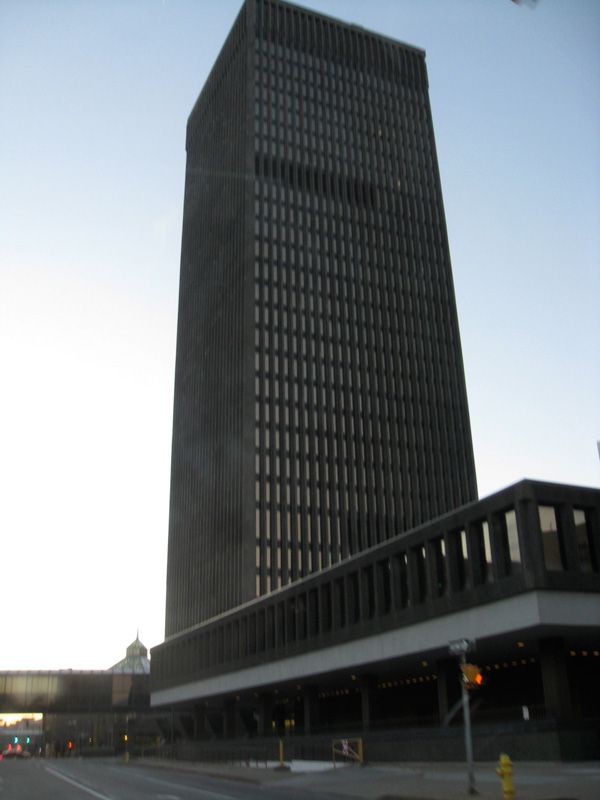This article was scraped from Rochester Subway. This is a blog about Rochester history and urbanism has not been published since 2017. The current owners are now publishing link spam which made me want to preserve this history.. The original article was published May 16, 2013 and can be found here.
![Xerox Tower. Completed 1966. [PHOTO: Friscocali, Fickr]](https://senseofplace.dev/content/images/photos/xerox-tower-rochester-friscocali.jpg)
The following is a guest post submitted by Jimmy Combs .
Submit your story today .
Ever notice how the Xerox Tower looks like one of the original World Trade Center towers? Did you know that the Xerox Tower was completed five years before the World Trade Center towers? Hmmm, so maybe the Xerox Tower inspired the design of the World Trade Center Towers? This would make Xerox Tower an extremely important building in the history of architecture. I had to do some research...
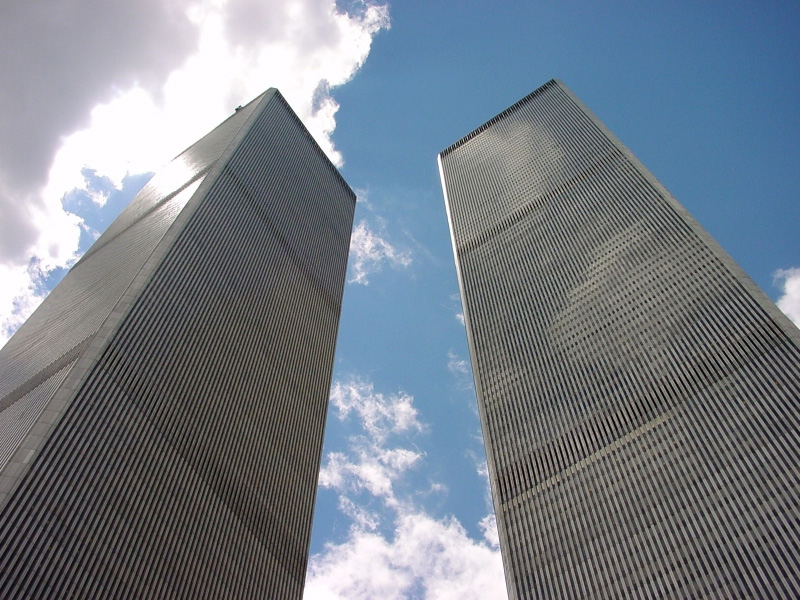
Initially what I hoped to find was that the Xerox building

did inspire the design of the WTC

. As it turns out unfortunately, it was the other way around. Xerox Tower was built with the intention of looking very similar to the World Trade Center towers. Despite this somewhat disappointing fact, there are many interesting connections between the architects of the two projects.

Welton Becket and Associates was the architecture firm responsible for the design of Xerox Square. Basically at the time the Xerox Tower was started in 1966 Welton Becket and Associates was the largest architecture firm in the world. Welton Becket

was born in Seattle in 1902. He Attended the University of Washington and graduated in 1927 with a Bachelor of Architecture degree.
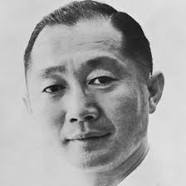

was the architect for the WTC towers. Minoru Yamasaki was born in Seattle in 1912. He attended the University of Washington and graduated in 1934 with a Bachelor of Architecture degree. Yamasaki became a very famous architect for his work in the Seattle's World's Fair in 1962.
Yamasaki had a building completed in Seattle and Buffalo during the mid 60's and they are basically the same design/feel as the WTC Towers...
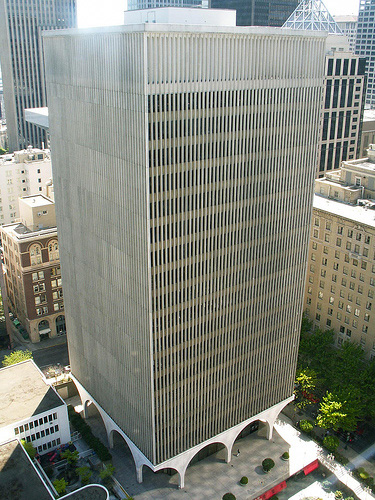
The IBM building

was completed in 1964. Yamasaki collaborated with NBBJ

, another Seattle based architecture firm. The IBM building was being designed in 1962, immediately after the Seattle World's Fair opened in April. Yamasaki did not have in mind the WTC project when designing the IBM building because Yamasaki was declared the architect for the WTC in September of 1962.
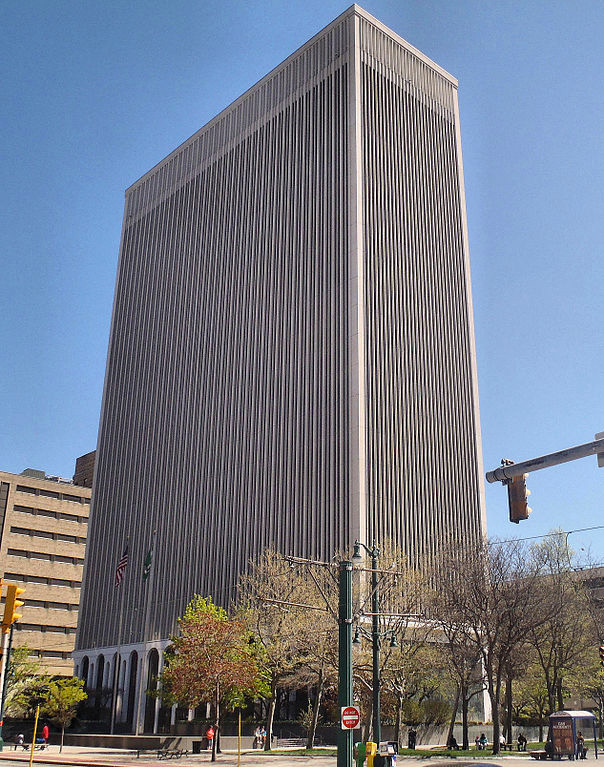
And One M&T Plaza

, Buffalo. Started in 1964 and completed in 1966.
So back to Walter Becket - Sometime around 1962 or 1963 Walter Becket was also collaborating with NBBJ on the Pauley Pavilion

(a famous arena on the UCLA campus). The Pauley Pavilion was completed in 1965. At the same time that Welton Becket was collaborating with NBBJ, Welton Becket commissioned Yamasaki to design some buildings for the major planned development called Century City

in Los Angeles.
Can you see this friendship triangle of architecture firms? Beginning with the Seattle's World's Fair, NBBJ and Yamasaki worked together on several other projects. NBBJ worked with Welton Becket at least once, and Welton Becket and Associates hired Yamasaki as the prominent architect for Century City.
The Xerox Tower is clearly not an original design of Welton Becket, but instead heavily influenced by Yamasaki's work. Perhaps the two architects had mutual respect for each other: Welton Becket did hire Yamasaki for Century City, so maybe that made it ok for Welton Becket to use Yamasaki's architecture style. It is possible that Yamasaki simply did not care if others copied his style. Even if he did care there was nothing he could do to stop it from happening. But it's not like Welton Becket and Associates were the only one's to copy Yamasaki's thin vertical columns and skinny windows. There are countless examples. It is important to know that the final design for the WTC went public in 1964, and construction began in 1966. So many buildings that were designed in the mid 60's to mid 70's tried to emulate the WTC design in some way. Call it WTC fever?
It is unclear how much influence NBBJ had over Yamasaki's work - especially with the IBM building.
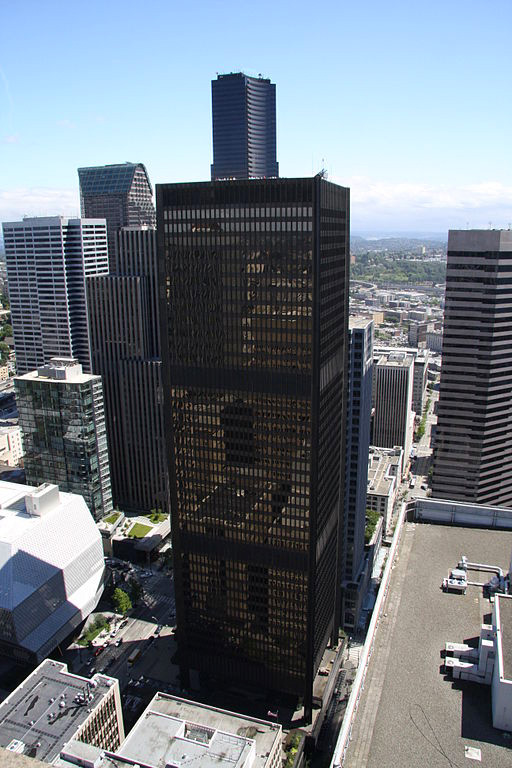
NBBJ designed a tower in Seattle at virtually the same time the Xerox Tower was designed - Safeco Plaza Tower

. The two towers are very similar. Both buildings went up in 1966, but the Xerox building was finished first - because of its smaller size.
So a quick recap: The architect for Xerox Tower, Welton Becket, personally knew and worked with Minoru Yamasaki, the architect for the Original World Trade Center.
![Nelson Rockefeller looks at model of world trade center with its Architect Minoru Yamasaki, Jan. 19, 1964.
[PHOTO: John Campbell, Daily News]](https://senseofplace.dev/content/images/photos/world-trade-center-model.jpg)
Becket and Yamasaki both (on separate occasions) collaborated with NBBJ architects. Becket and Yamasaki were both born in Seattle and they both graduated with a Bachelor of Architecture Degree from the University of Washington.
The Xerox tower was one of the first of its kind, but sadly I would not consider it valuable or beautiful architecture. That is because it is simply a fake. It was not designed from the heart. The largest architecture firm in the world (Welton Becket and Associates) simply wanted to prove to the world they were well acquainted with the most modern designs. On the other hand Yamasaki poured his heart into the design of the World Trade Center. Here is a quote from him,
I feel this way about it. World trade means world peace and consequently the World Trade Center buildings in New York ... had a bigger purpose than just to provide room for tenants. The World Trade Center is a living symbol of man's dedication to world peace ... beyond the compelling need to make this a monument to world peace, the World Trade Center should, because of its importance, become a representation of man's belief in humanity, his need for individual dignity, his beliefs in the cooperation of men, and through cooperation, his ability to find greatness.
That quote makes sense; when you hold up the peace sign you show two fingers. The WTC was two enormous towers; identical to each other, their size almost intimidating, but they coexisted in peace.
Don't get me wrong, I love the Xerox Tower, but it's a phony.
* * *
About Jimmy Combs:
Jimmy Combs is a 20 year old living in Penfield. He is obsessed with the city of Rochester and wants to help Rochester succeed in a major way, and bring it back to its former glory.
